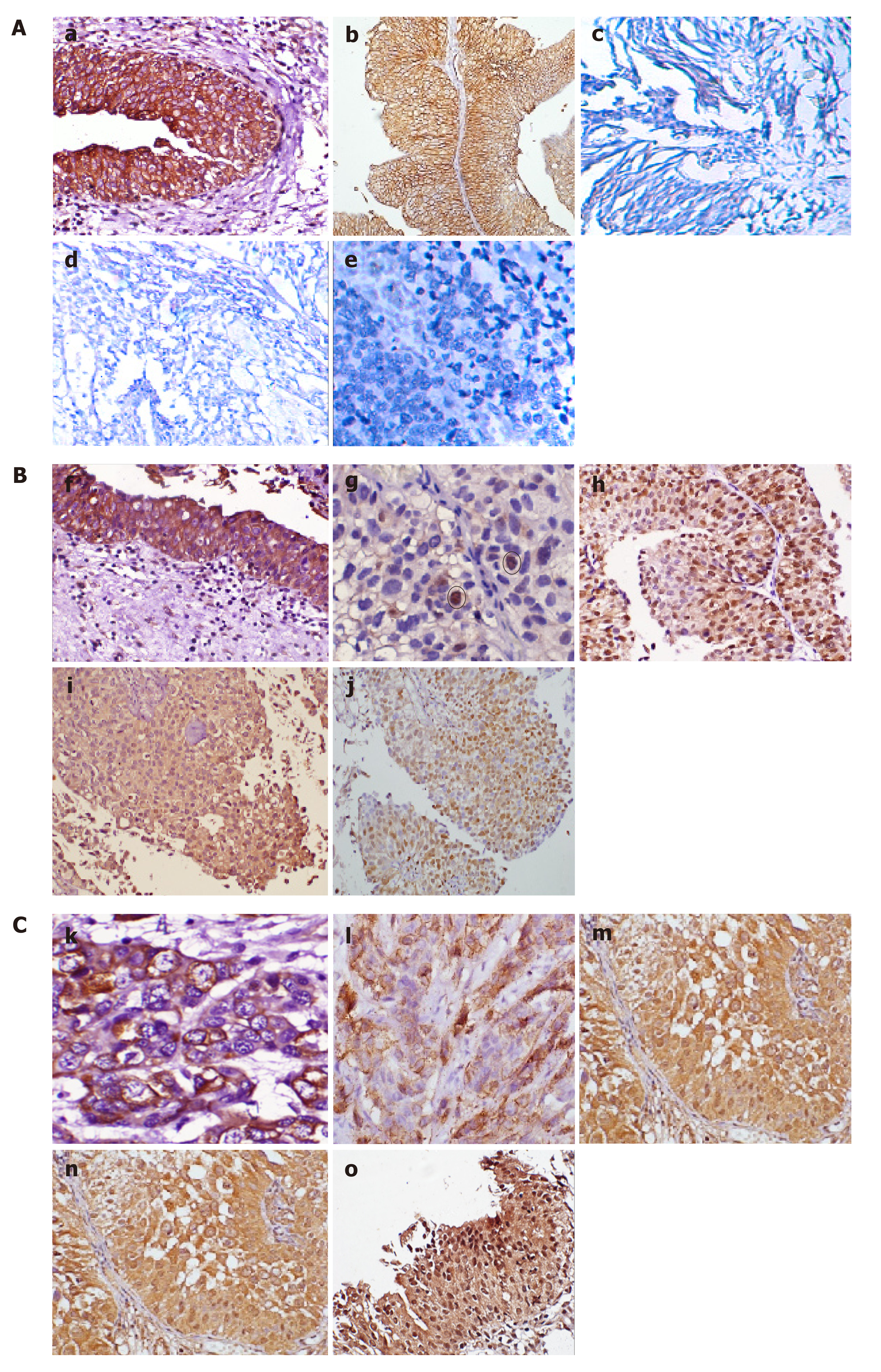Copyright
©The Author(s) 2019.
World J Clin Oncol. Apr 24, 2019; 10(4): 166-182
Published online Apr 24, 2019. doi: 10.5306/wjco.v10.i4.166
Published online Apr 24, 2019. doi: 10.5306/wjco.v10.i4.166
Figure 3 Representative images of immunohistochemical staining of marker protein in urinary bladder tumors at the magnification of 400×.
A: Controls: a: Positive control for pS9GSK-3β showing strong membranous expression in normal urothelium; b: Positive control for β-catenin showing high membranous expression in normal urothelium; c: Negative control for Cyclin D1; d: Negative control for Snail; e: Negative control for Slug; B: Immunohistochemical (IHC) staining in non-muscle invasive bladder cancer cases; f: Nuclear/cytoplasmic expression of pS9GSK-3β; g: Nuclear expression of β-catenin (few tumor cells are circled); h: Cyclin D1 nuclear immunoexpression in 60%-70%; i: Snail nuclear immunopositivity in 80-90% cells; j: Slug nuclear expression in 60%-70% cells; C: IHC staining in muscle invasive bladder cancer cases; k: Loss of membranous pS9GSK-3β expression; l: Loss of β-catenin membranous expression; m: 100% nuclear staining for Cyclin D1 in urothelium; n: 100% nuclear immunoexpression of Snail in urothelium; o: 100% nuclear immunopositivity of Slug (Snail and Slug showed both nuclear and non-specific cytoplasmic staining, however, only nuclear expression was taken into account during analysis).
- Citation: Maurya N, Singh R, Goel A, Singhai A, Singh UP, Agrawal V, Garg M. Clinicohistopathological implications of phosphoserine 9 glycogen synthase kinase-3β/ β-catenin in urinary bladder cancer patients. World J Clin Oncol 2019; 10(4): 166-182
- URL: https://www.wjgnet.com/2218-4333/full/v10/i4/166.htm
- DOI: https://dx.doi.org/10.5306/wjco.v10.i4.166









